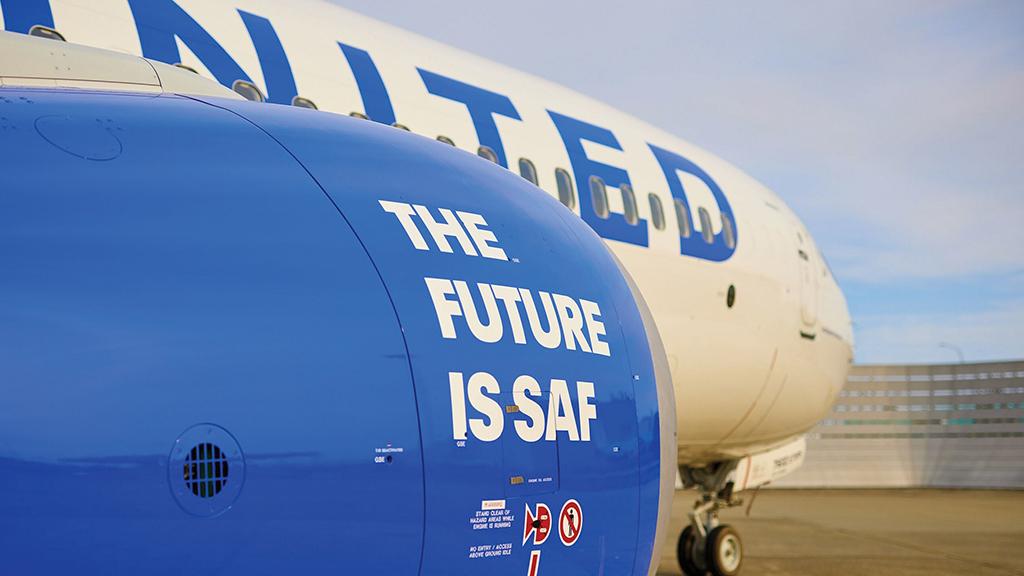
As aviation pursues its 2050 net-zero goal, sustainable aviation fuel is arguably the only lever other than aircraft replacement that can make a dent in emissions over the next 10-15 years. Yet usage of the fuel in 2024 is estimated to be just 0.54% of global aviation fuel consumption.
Europe and the U.S. are taking very different approaches to promoting sustainable aviation fuel (SAF). Europe has mandated that 2% of aviation fuel be SAF by 2025, followed by 6% in 2030, 20% in 2035 and increase to 70% by 2050. It recently added a subsidy program for 2024-26 worth €2 billion ($2.2 billion) to cover the price difference between $2.50/gal. Jet A and SAF at $7-10/gal. In contrast, the U.S. depends only on supply-side subsidies under the Inflation Reduction Act, giving fuel producers tax credits that partially cover the cost difference. U.S. progress is slow, and its outlook for adopting SAF is uncertain. The U.S. should consider following Europe’s lead and adopt SAF usage mandates for several reasons.
First, the free market alone will not make this happen. Subsidies such as those provided by the Inflation Reduction Act are highly vulnerable in the politically divided U.S. A change in administration could make SAF subsidies disappear overnight. This limits the incentive for fuel companies and entrepreneurs to invest in SAF production capacity and technologies, while the need for investment is enormous—up to €1 trillion to achieve global net-zero, according to PwC.
Second, a mandate would level the playing field for airlines and prevent a “free rider” situation. Current projections are that SAF will always be 50-100% more expensive than kerosene. Given the competitive nature of aviation and the uncertainty of subsidies, what is the incentive for an airline to use more than a small quantity? If in 2035, for example, United Airlines used 20% SAF while American Airlines used 5%, United would lock in a cost disadvantage, lower profits and reduced market share. Its shareholders would demand change.
A third reason is that SAF is aviation’s most feasible net-zero alternative. A next-generation single-aisle is 10-15 years away and only a partial solution, while hydrogen-powered aircraft look like an alternative for the 2050s or later. In contrast, SAF can use existing infrastructure and aircraft. Despite being arguably the hardest industry in the global economy to decarbonize, aviation must do its part this decade or risk public backlash—or worse.
There are notable arguments against a SAF mandate. Betting on one solution is not the economically optimal approach. Economists argue that sustainability credits are more fungible and would allow airlines to remain flexible and select the most economically efficient approach. If, for example, large-scale and high-quality carbon offset credits emerge or cost-effective direct air capture infrastructure is developed, a SAF mandate might be a bet on the wrong horse.
Others argue that a SAF mandate will increase the cost of air travel unnecessarily, with fuel comprising 20-30% of an airline’s operating costs. This is true, but fuel costs are set to increase anyway due to escalating carbon taxes. Fortunately, air travel demand is resilient. AeroDynamic Advisory estimates that if fuel prices were to double, air traffic in 2050 would still increase 70%. Also, innovative public policy can reduce the economic impact. Singapore recently enacted a SAF usage mandate with targets that vary based on wider availability and price; the 2030 target is 3-5%.
Finally, most Americans do not like mandates. They do not fit the national culture. This makes it difficult to obtain a consensus and enact public policy. We have yet to achieve consensus on SAF mandates in my own company, AeroDynamic Advisory. Yet the automobile industry proves otherwise. Nearly 20 years ago, the U.S. enacted the Renewable Fuel Standard, which required a blend of 10% ethanol in most conventional gasoline and fomented the creation of an enormous ethanol ecosystem. Some 35-40% of all corn grown in the U.S. is a nonedible variety used for ethanol and covers more than 40,000 mi.2 of land—equivalent to the state of Michigan. Coincidentally, these same ethanol producers are looking for new markets with the onset of electric vehicles. Alcohol-to-jet SAF could be their most attractive option.
Mandates are tricky, particularly in a politically charged environment like the U.S. Yet in recent years, the EU, Japan, Malaysia, Singapore and the UK all overcame their own obstacles to enact mandates. The U.S. should follow if it is serious about sustainable aviation.
Contributing columnist Kevin Michaels is managing director of AeroDynamic Advisory in Ann Arbor, Michigan.





